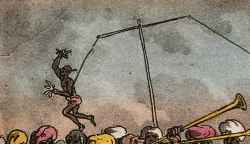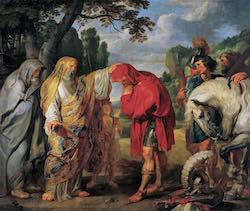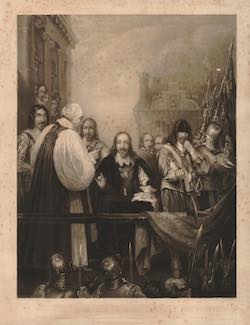Topic: 3. Sacrifice and politics (16th-18th Century)
During the transformative period of the 16th to 18th centuries, the notion of the State evolved into a nearly mystical entity, perceived as immortal and worthy of the ultimate sacrifice. This section delves into the complex interplay between sovereignty, resistance, and sacrifice, a theme explored by early proponents of political tolerance. It also examines revolutionary acts and regicide, viewed through the lens of sacrificial rites. This section includes early modern printed and iconographic sources, along with a comprehensive bibliography from the 19th to 21st centuries, providing a historical and modern perspective on this complex theme
The Last Blood Libel in Prague During the Maharal’s Lifetime
in: The Golem and the Wondrous Deeds of the Maharal of Prague
Yale: Yale University Press, 2008.
War is America’s Altar: Violence in the American Imagination
in: Peace, Culture, and Violence, pp. 198-217
Leiden: Brill, 2018.
Ristretto della vita e martirio di S. Simone fanciullo di Trento e fatto ristampare con una breve appendice da d. Francesco Rovira Bonet rettor de' Catecumeni, e parroco di S. Salvatore a' Monti
Roma: Giovanni Bartolomicchi, 1775.
Incapable States: Negotiating Violence and Rights in India
New Delhi: Oxford University Press, 2020.
Consacration of Decius Mus (1616 - 1617)
Prince of Liechtenstein's Collections, Wien
Death Decius Mus (1617)
Liechtenstein Museum, Wien
Mucius Scaevola in the Presence of Porsenna [1601 - 1650]
Pushkin State Museum of Fine Arts, Moscow
The End of Public Sacrifice: Changing Definitions of Sacrifice in Post-Constantinian Rome and Italy
in: Ancient mediterranean sacrifice, pp. 167-184
Oxford: Oxford University Press, 2012.
Verísima relación del riguroso y acervo martyrio que la reyna inglesa dio á dos soldados de nuestra nación española, del exército del Príncipe Cardenal, y de cómo la sereníssima Virgen les manifestó el martirio que havian de pasar, juntamente con el convertimiento de seis judíos que recibieron el mismo martirio muriendo empalados. En 17 de mayo de 1596 años. Con un romance al cabo.
Alcalá de Henares: Herederos de Sebastián Martínez, 1596.
Policing Sati: Law, Order, and Spectacle in Postcolonial India
in: Law and History Review, v. (2023), issue : pp.1-23.
Delle tragedie sacre e morali raccolte dal signor abbate Don Martino la Farina. 12: Delle tragedie sacre e morali del molto reverendo padre Hortensio Scammacca della Compagnia di Giesu lentinese
Palermo: Decio Cirillo, 1648.
Politische Theologie; vier Kapitel zur Lehre von der Souveränität
Berlin: Duncker & Humblot, 1921.
The Meanings of Sacrifice: the LTTE, Suicide, and the Limits of the Religion Question
in: Martyrdom, Self-Sacrifice, and Self-Immolation: Religious Perspectives on Suicide, pp. 226-240
Oxford: Oxford University Press, 2018.
Stuart Koningliik door rampen verdrukt en verheerliikt
Amsterdam: n.p., [1688].






